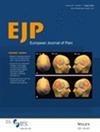Chronic pain is one of the most common health conditions among older adults, triggering various disruptions in information processing across attentional, emotional, and somatosensory domains. However, there is insufficient information about how these aspects interact and their potential contribution to the vulnerability of older adults to chronic pain. This study aimed to investigate potential alterations induced by chronic pain during aging in attentional aspects of tactile stimulation and to observe the influence of affective context.
Twenty-six older adults with chronic pain (70.00 ± 5.07 years; 11 males), 28 pain-free older adults (69.57 ± 3.96 years; 13 males) and 27 healthy younger adults (21.48 ± 1.80 years; 14 males) participated in the study. We compared the somatosensory evoked potentials elicited by frequent and deviant stimulation (probability 14%) applied when participants were viewing blocks of pleasant, unpleasant, and neutral images from the International Affective Picture System.
During frequent stimulation, older adults with chronic pain showed higher P50 and N100 amplitudes compared to pain-free older adults and younger individuals. Furthermore, the older group with pain exhibited higher P300 amplitude during emotional contexts compared to neutral scenarios. During deviant stimulation, older adults with chronic pain exhibited higher P50 and N100 amplitudes compared to pain-free older adults but displayed typical age-related flattening during P300.
These findings indicate that chronic pain leads to a decline in the ability to habituate to non-painful irrelevant somatosensory stimuli, especially when it is presented in an emotional context.
In the present study, we have observed how older individuals suffering from chronic pain exhibit a decline in the habituation capacity of irrelevant somatosensory information. Furthermore, we have observed how the affective context in which these individuals are situated leads to an exacerbation of this deficit. Enhancing our comprehension of how aging and chronic pain interact to impact somatosensory processing could facilitate the tailoring of novel intervention strategies.



